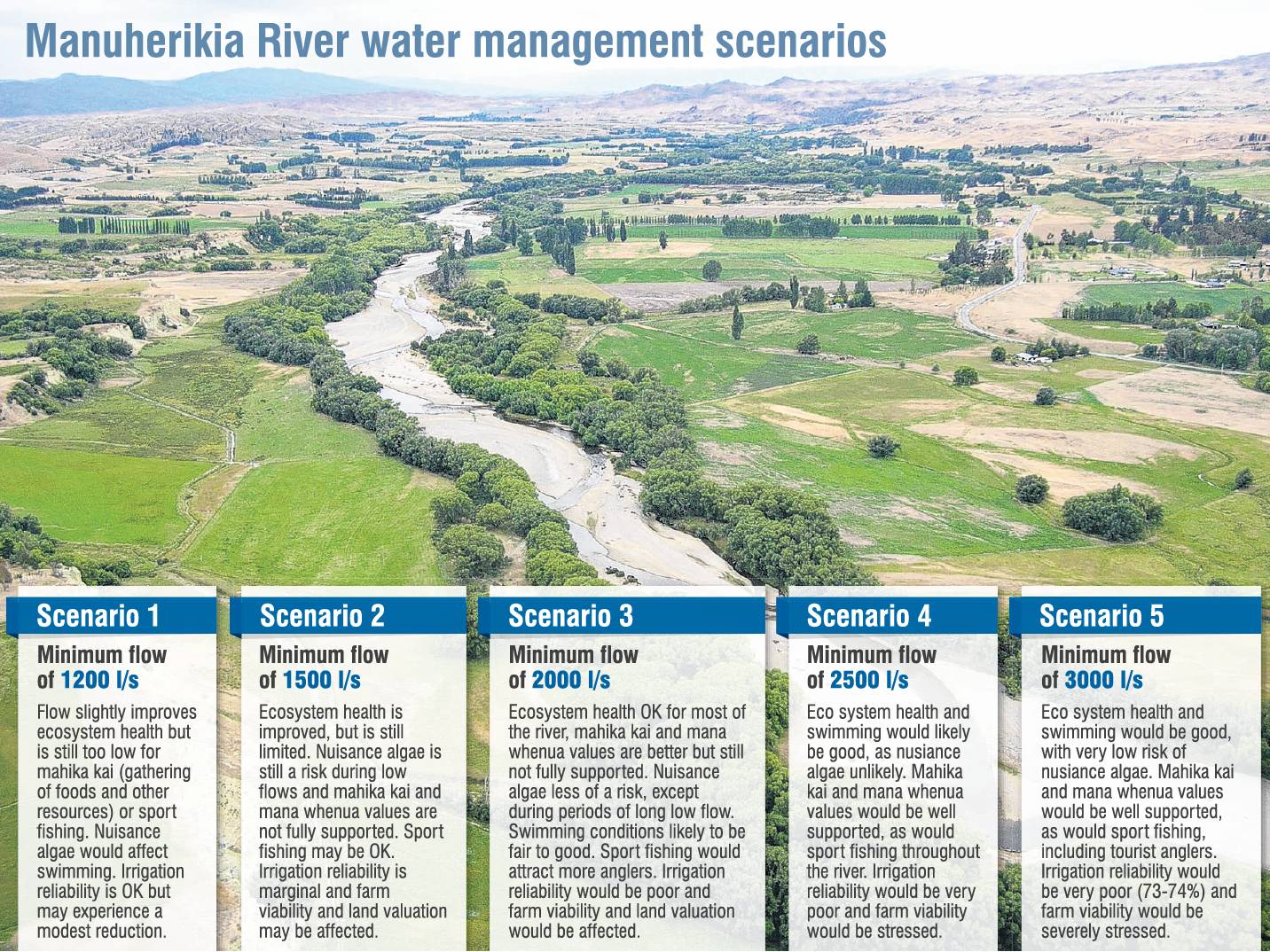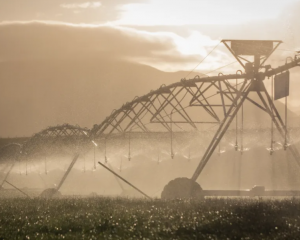
The council released the options this week and wants public feedback by June 18.
The flow options range incrementally from 1200 litres
per second (option one) up to 3000 litres per second (option five).
The regional council document states at 3000 litres per second, there are clear benefits for ecosystem health, swimming, mahika kai and mana whenua values, and fishing but irrigation reliability "would be very poor" (73%-74%) and farm viability "would be severely stressed".
Regional councillor and Alexandra farmer Gary Kelliher said he was "incredibly disappointed" with the council and the Manuherikia Reference Group as "they haven’t really narrowed the gulf-sized chasm between environmental factions and the water users within the catchment, but have wasted an awful lot of time".
Seeking feedback on that range was "nonsensical and misleading" and would not produce a fair result for all, Cr Kelliher said.
Normally, Cr Kelliher would not be able to comment, but because of declared conflicts of interest, he will not be making decisions on the matter.

He was previously the reference group deputy chairman and had "desperately hoped" the council and reference group "would put more scientific fact and detail into the mix" and bring the groups closer together.
He urged the community to study the details and ask questions.
It was a similar view but for different reasons from a Central Otago environmentalist.
Central Otago Environmental Society chairman Mike Riddell said none of the scenarios were favoured, but the society could consider supporting option five.
"This is the 3000 litres per second [minimum flow] option, which in our view is still inadequate. We would be hoping for 4000 litres per second, which is not even an option," Mr Riddell said.
Mr Riddell was on the Manuherikia Reference Group.
Otago Federated Farmers spokesman Simon Davies said he could comment on preferred options after colleagues looked at the details today.
He was pleased farmers now knew what they faced but was surprised the options had been released while the regional council’s water permits plan change (plan change 7) was still before the Environment Court.
"Until that is resolved, farmers are very much in no man’s land," Mr Davies said.
Otago Fish and Game Council environmental officer Nigel Paragreen said setting minimum flows would not be easy but river health and wellbeing was the priority and the river needed a much greater share of water.
All five options would be carefully considered. However, Fish and Game noted a study by the Cawthron Institute had found flows below 2300 litres per second were indicative of ecological stress, Mr Paragreen said.
Forest and Bird Otago conservation manager Rick Zwaan said the group supported option five.
"For far too long, the river has been severely deprived of water, with relaxed regulation by the regional council allowing private profit to be put ahead of the river’s health," Mr Zwaan said.
Under new Government freshwater policy introduced last year, regional councils must place the health and wellbeing of water bodies before that of people and communities.
Mr Riddell said the consultation phase would be a "once in a lifetime opportunity to remediate the Manuherikia".
There had been a significant policy change "and we expect that the community and the ORC will endorse this expectation," Mr Riddell said.
Gwyneth Elsum, the Otago Regional Council general manager of strategy, policy and science, said the council had heard the community speak about the values and health of the river.
"Now we’d like to hear which of the five scenarios, if any, people prefer to achieve those values," Ms Elsum said.
Consultation dates
- Alexandra Community Centre/ Memorial Hall: May 27, 1pm-8pm (staff presentations 2pm and 7pm).
- Omakau Hall: May 28, 1pm-6pm (staff presentation 4pm). A web page has also been set up to gather feedback online by June 18.
- By Marjorie Cook
Comments
Why is the ORC wasting money on this? Minimum flow rates should be set to give the best ecological and environmental outcomes based on the best scientific evidence available and not be compromised by commercial or recreational pressures. To do anything else is breaking the law.
Under new Government freshwater policy introduced last year, regional councils must place the health and wellbeing of water bodies before that of people and communities.
Its called jobs, in this part of the country water is critical for growth and jobs. Those jobs pay tax to give to this Government to give to those who cant be bothered having one...
Water is critical for more than just jobs McRae it is essential for all life on this planet. It is a natural resource that we must protect for future prosperity. Protecting this river and all the ecosystems it supports including humans is exactly why the new law was introduced. If the ORC do not put the wellbeing of this river above that of farmers or other people they will be in breach of the new law. It is a simple as that. We have to learn to live and work in a substantial manner with nature not just exploit it for short term gain.
The 'gulf size chasm' of water take between these options and Mr. Kelliher's constituency is easily calculated here as 1,200 liters/s. Barely more than a single cumec. Given ORC enforcement practice I suspect that 'oversuck' will account for this residual amount quite easily. We then reach a minimum flow rate of zero - I look forward to seeing them try to oversuck that on a hot February day when the cows are thirsty!














